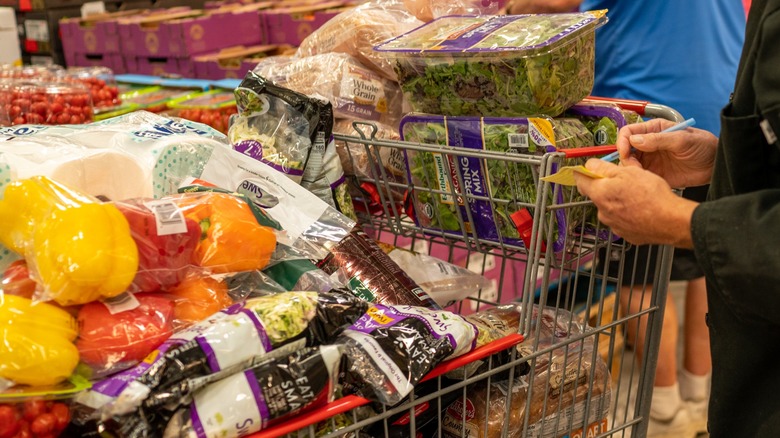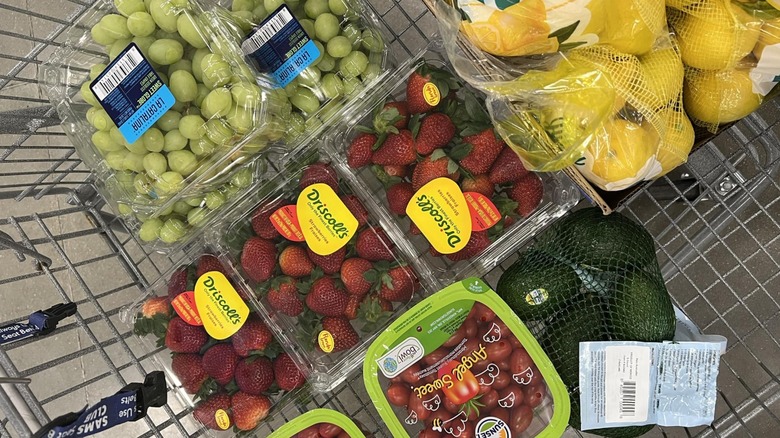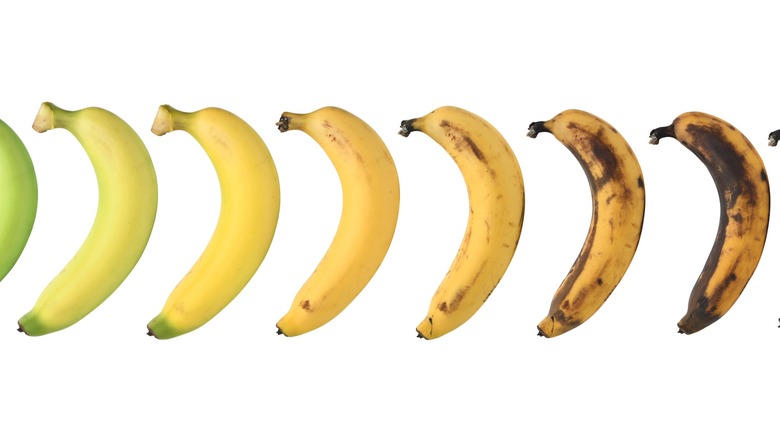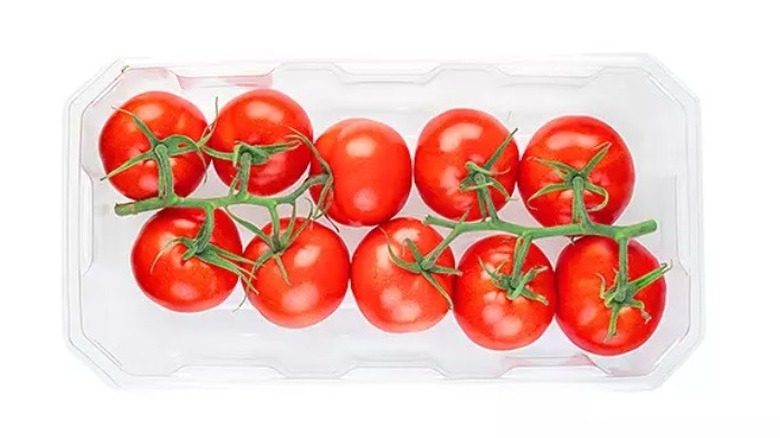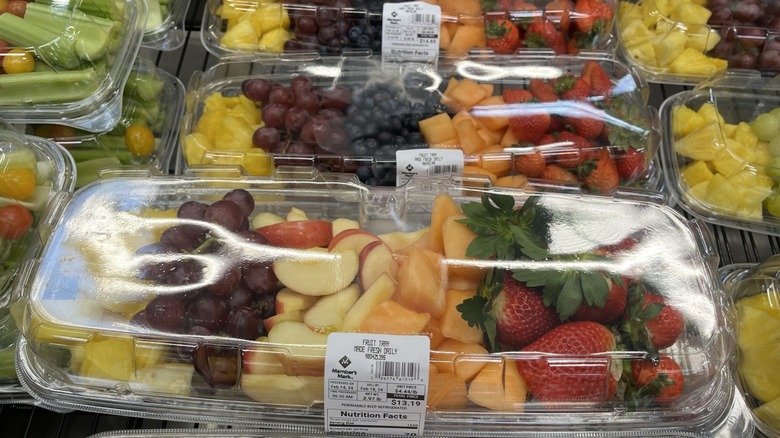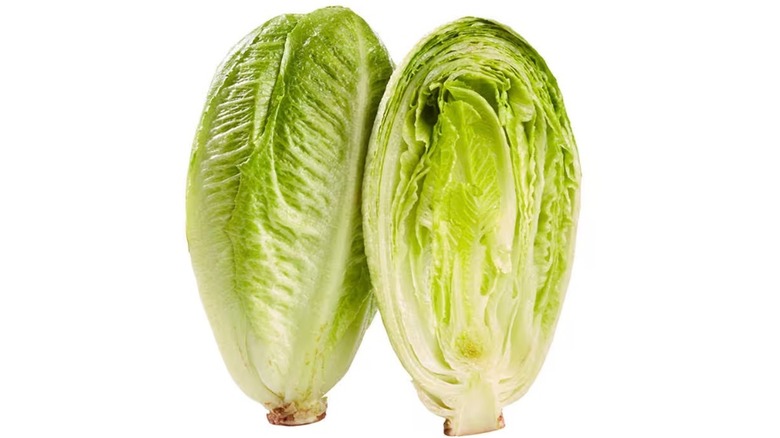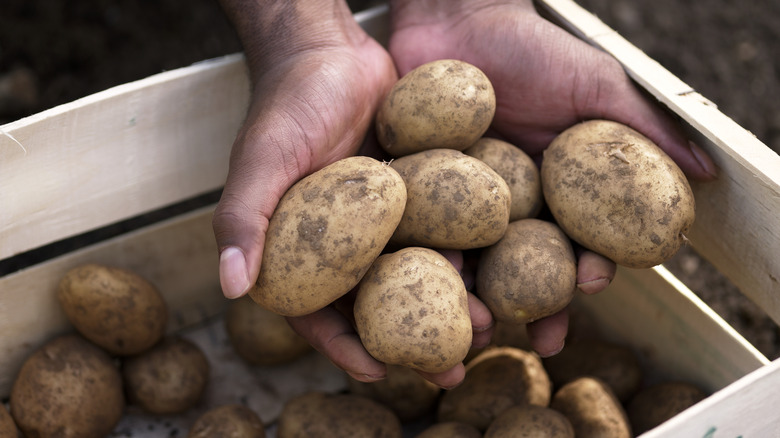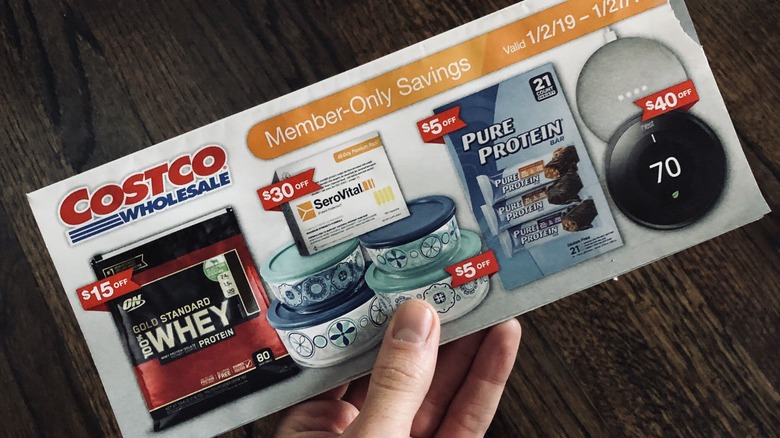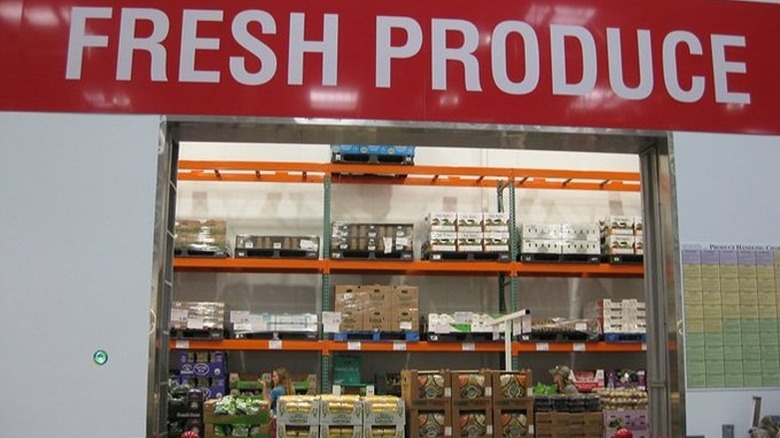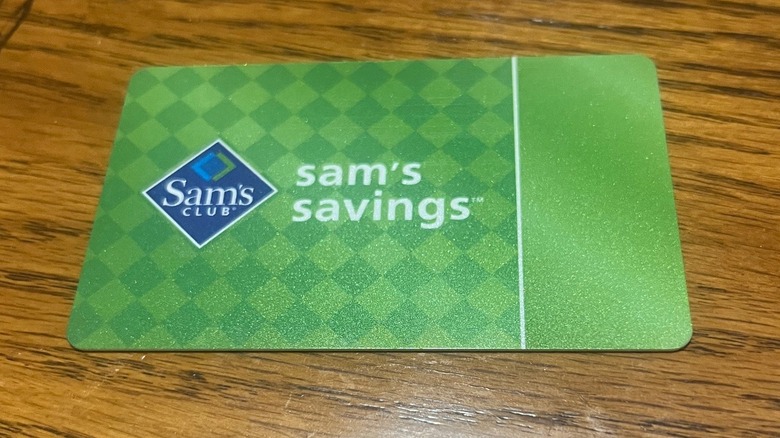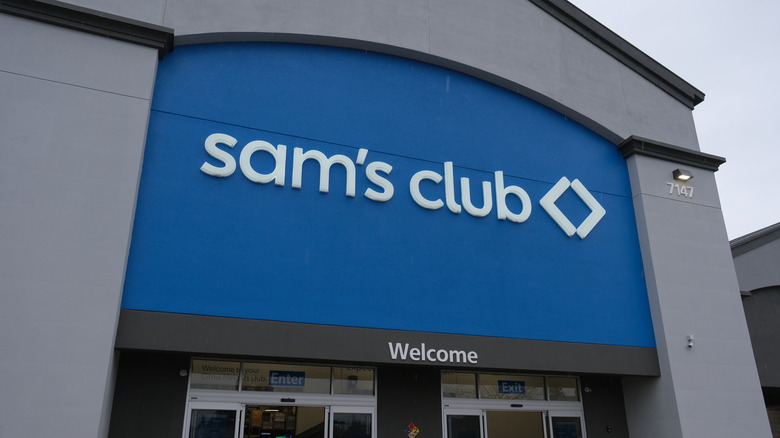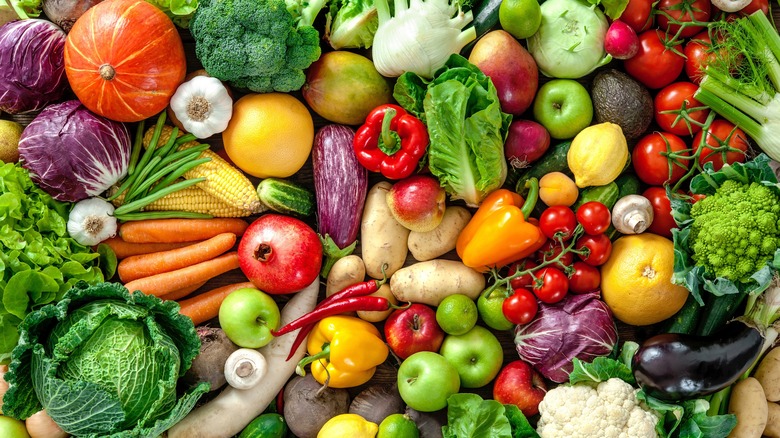Costco Produce Vs Sam's Club Produce
We may receive a commission on purchases made from links.
In our ongoing journey to find great food at affordable prices, we've arrived at the existential question every grocery shopper eventually asks: Is it better to buy bulk produce at Costco or Sam's Club? It can be baffling figuring out how to maximize money-saving produce purchases on your warehouse shopping trips. Whether you cruise through Costco or saunter into Sam's Club, you'll find a supreme selection of farm-fresh fruits and veggies that can overwhelm the average shopper with its abundant variety. It's not just the delicious diversity that can put you in the weeds while shopping; making sure you get the best market price for what you buy is a confusing task, especially if you don't have time to comparison shop between clubs.
Even if you favor one warehouse over the other for personal reasons, it's crucial to know if you're getting your money's worth or wasting precious pennies. There are valid reasons shoppers might opt not to buy produce at Costco or fear making a mistake by shopping at Sam's Club for fruits and vegetables, especially when it comes to selection and savings. I've held memberships at both warehouses for years and have frequently bounced back and forth between stores in search of the best produce at the best prices. Having insight into what Costco and Sam's Club offer in their produce departments, I dug into the pros and cons to figure out which spot offers a certifiable cream-of-the-crop produce shopping experience you'll find ripe and refreshing.
Sam's Club provides better online produce shopping than Costco
If you're compiling a list of needs and wants for your Sam's Club produce excursion, finding out what the store has on hand is as easy as performing an Internet search and jotting down your favorites — or better yet, click-and-save to the Sam's Club app and follow the trail as you shop. You can peruse vegetable and fruit options and prepare an order for Instacart delivery, saving yourself time, money, and fuel while gathering fresh food for yourself and your family. For shoppers who love 21st-century shopping convenience, this feature is hugely beneficial when the crisper drawer runs low. You can also assemble an ongoing list of items to replenish without having to start from scratch due to capricious stocking practices. And if any specials aimed at digital shoppers show up, they'll be pushed to the app, fresh and ready for your next trip.
As for Costco, the Business Center model is the chief provider of dependable online shopping options for produce, mostly for higher-volume quantities. Although there is a Costco shopping app available with a similar Instacart delivery feature, Reddit users confirm that shopping selections are limited and warehouse availability makes finding what you need a sticky wicket. Being able to find the same item twice is a Costco bug rather than a feature, which means your favorite produce might not be present when you assemble your order, giving Sam's Club a distinct digital shopping advantage.
Costco bananas don't always ripen properly
It has happened more times than can be accurately recalled. We buy a bunch of bananas at Costco and place them on the counter, as the clock counts down the moments until ripeness. And then we wait ... and wait ... and wait. Somehow, nature never takes its course, and the bananas remain just shy of becoming edible. The skin barely separates from the inner flesh, resulting in tough, half-peeled fruit that can't be used. Other times, Costco bananas go from green to spotty yellow-brown without stopping at the just-ripe stage in between. Granted, the prices were well-discounted, so no extra money was shelled out for this disappointing turn of events. But why on earth would a bunch of bananas get so confused, regardless of where they were purchased?
Some say the blame is on the gas compounds suppliers use to put unripe bananas in a state of suspended animation to keep them from ripening in transit — a process that should reverse once the bananas are exposed to fresh air. Others suggest the super cold storage might be to blame. But we've had enough bad banana encounters at Costco to know that even the traditional brown bag method to control the ripening isn't always a solution. It's a strange phenomenon we never notice at Sam's Club, and it's an important guidepost when making sure the money you spend results in food you can actually eat.
Sam's Club has lower prices on many family-friendly necessities
Laying certain selections side-by-side gives you a clearer view of how Sam's Club's prices for family needs are a better deal than Costco in many instances. For example, as of publication, Sam's Club's online price for on-the-vine tomatoes is $4.88 for 3 pounds. Costco's price for the same quantity is $6.29; for an extra pound, the price jumps up to $8.09. Similarly, a 5-pound bag of clementines runs around $7.32 at Sam's Club, while at Costco the same quantity runs $8.19. Differences vary by location of course, but distinctions like this are notable enough to make shoppers put their Costco purchase back on the shelf and head for Sam's Club to do a little price comparison.
The items you can search for online at Costco largely appear as part of the Costco Business Center model, a corporate-style warehouse set up for restaurant and retail supplies. Businesses can buy as many serving pans and Sterno cans as they need to run their operations and load up on super bulk quantities of edible goods to serve in their establishments. This may justify the price and product differences, but it also singles out Costco as an up-and-down provider of deals that many shoppers expect to be available on a regular basis. This isn't to say it's not worth peeking at the website to see if there's anything worth grabbing while you're out and about. Just know that dependability isn't a key design element.
Sam's Club has a larger variety of staple fruits, while Costco gets more fun seasonal fruits
Though both clubs are arranged in an open warehouse layout, Sam's Club often takes a more family-friendly approach than Costco when it comes to stocking staple fruits on the regular. Grapes, apples, oranges, and bananas are the regular selection for Sam's, in full-sized quantities that give you plenty of fruit to feed your hungry crew. It's a similar selection to what you'll find at Walmart, at prices that are more dependably friendly for quantity shopping. Put simply, it's more like a standard grocery store as far as core fruits (pun intended) you know your family will appreciate.
For fans of uncommon seasonal fruits, Costco does an admirable job of fulfilling the fantasy orders shoppers may have in mind when weather changes and tastes shift. Tropical treats like mangoes, kiwi, and dragon fruit are always exciting finds that Costco excels at providing. Quirky fruits like kiwi berries make appearances to entice shoppers and introduce them to a realm of possibility beyond the garden variety goods. And upscale fruits like Bosc pears can be found among the clementines and avocados on occasion. This makes Costco a fun spot for one-off purchases and surprise selections that may be challenging to find elsewhere.
Costco has more lettuce varieties than Sam's Club
For salad eaters who fly through heads of lettuce like nobody's business, having a Costco-level selection is a more pleasing prospect than the simple array stocked at Sam's Club. At its standard warehouse centers, Costco shares a bounty of romaine in full head and hearts-only, as well as the typical iceberg to make a basic salad for picky eaters (usually kids). But there's also a variety of bagged power greens and spinach, tubs of spring salad mix, and even organic living lettuce that gives devoted plant-eaters their best shot at field-fresh dining. Meanwhile, Sam's Club sticks to the lettuce fundamentals, with romaine, iceberg, and the occasional package of pre-mixed greens.
Neither club stocks kale, red lettuce, or fresh spinach, notable omissions that require trips to a farmer's market or standard grocery store to complete the crisper collection. So while grabbing bulk lettuce at either warehouse still limits your options, you have a better chance of cleaning up in the salad aisle at Costco rather than in the limited greens patch available at Sam's.
Costco Business Center stocks several restaurant-ready produce items
If you're planning a gathering with an expansive crowd and need a lot of produce, Costco Business Center is a better bet than Sam's Club for getting what you need easily and affordably. Ginger, onions, and garlic in super-bulk quantities can help when you have a larger crowd to feed on a budget. Likewise, 15-pound bags of potatoes and bulk-packaged mushrooms are great for holiday feasts where seating is guaranteed to be standing room only. While you may find similar items at Sam's Club, it's not likely that you'll find them in the same quantities as Costco — knowledge that can guide you to the right warehouse for the right occasion.
By viewing options online at Costco Business Center, shoppers can get a feel for what might make sense as a Costco maximum bulk purchase. Because much of what you'll find is fresh and may rapidly reach a state of deterioration, be sure to have plans for everything on your list. This will help minimize the possibility of overbuying and needing to toss unused produce that seemed like a great deal at the time.
Both stores offer flyer-based coupons and sale specials
Anyone who's ever received a flyer in the mail from Costco or Sam's Club is aware of the phenomenal prices showcased in each publication, sometimes as simple markdowns and other times as specialty coupons. These added discounts let shoppers hone in on exciting specials to take even more advantage of bulk-style shopping for fruits and veggies. In fact, if you're on the lookout for a big Costco sale or a Sam's Club special event featuring prime produce, the company's flyers are the best way to stay alert.
It may mean getting snail mail more frequently than you're used to, but both warehouses automatically begin sending these special-price flyers as soon as you sign up for your membership. Considering the quantity of items featured, this may be annoying. In an ever-increasing digital world, you'll likely find most deals listed on the websites when you log in. Whichever version you prefer, if you turn your attention to the produce sections, you'll often find sweet deals that can help make your shopping decisions even easier.
Both stores keep much of their organic and non-organic refrigerated produce in very cold storage
The good news for Sam's Club and Costco shoppers: Both outlets stock organic and non-organic selections. The stranger news: You might want to bring your parka and a pair of snow boots when shopping for produce at either store. To ensure freshness (and maybe to keep customers moving through at a brisk pace), both clubs keep their refrigerated fruit and vegetables in a dedicated bay, maintained under incredibly cold conditions. In this year-round wintery wonderland environment, you'll find romaine and bagged salad greens, bright red strawberries, and grapes that are sometimes the size of a squirrel's head, based on our best estimation.
Visitors can see a loop of shoppers sweep into the refrigerated bay, quickly shop, and sweep right back out as their teeth chatter and they rub their hands for warmth. Yes, it is that cold inside, and it makes for a fantastic break from the summer heat. Keeping bulk goods as cold as possible lets Sam's Club and Costco maintain freshness for as long as possible as they sell through their stock. This means shoppers at both stores get produce at its peak, even if handling the goods means having to wear mittens and earmuffs.
Sam's Club membership prices are better than Costco
Costco may have been the original membership warehouse club on the scene way back in the '70s when it was known as Price Club, but Sam's Club has come up with a more affordable pass into the wonderworld of bulk buying. An entry-level membership at Costco will run you $60 annually, which comes with two cards connected to the same account. This makes it easy for couples and families to carry their own cards for access to the club in person or online whenever they need to go in for a bulk shop. There's also a premium package for $120 annually, which comes with a 2% reward plus discounts on specialty services, but still only includes two cards.
At Sam's Club, you can get two membership cards for only $50 per year, a $10 savings that gives you access to app-based convenience and a more dependable stock of your farm-fresh necessities. The warehouse frequently runs promos to reduce this price. For $110 per year, you'll also receive a 2% cash-back bonus on qualifying items, free shipping on many online deliveries, free curbside pickup, early access to the warehouse, and special discounts on automotive and vision services. You can also add up to 16 additional members to the basic program for a reduced price of $45 per card per year, a Sam's Club hack larger families may love.
Verdict: Sam's Club is the better produce pick
Based on the availability of what an average shopper needs, a slightly more affordable membership fee, and the ability to scout out your purchase online, Sam's Club comes out as a fresher choice than Costco. The obvious similarities mean you can readily find workable produce at both stores, though this requires paying for two different annual memberships. For anyone who doesn't have a membership yet but is hoping to choose the better warehouse for their produce shopping, picking up a Sam's Club membership will serve you much more satisfaction in the long run.
If you already have a Costco membership, you'll still be able to find fantastic produce at prices that beat standard grocery stores on a regular basis. Nevertheless, Sam's Club proves to be a much better deal all around. Remember that whichever you shop at, you'll be buying in bulk, so be prepared to use your produce quickly or put it in cold storage so your savings don't go down the drain.
How we made our determination
I have memberships for both Costco and Sam's Club and have shopped at both for many years. While the excitement of bulk shopping originated with Costco, Sam's Club has figured out how to address the needs of a broader audience, one more familiar with a Walmart way of shopping. This includes the produce selection, availability, and pricing structure, which have provided a huge advantage when shopping for family-friendly quantities of fruits and vegetables. I've encountered many instances where a Sam's Club trip was baked into my produce shopping plans, but a Costco trip was reserved when other purchases were required. It's never a good sign for a store when customers skip out due to a competitor offering better prices and more reliable produce.
Though Costco does an admirable job with its products, I've noticed a distinct difference when trying to consistently find the same brands and formats, rather than just when Costco's undependable ordering schedule dictates. The difference is so notable, that it's driven my decision to shop at Sam's Club as a regular practice while stopping by Costco occasionally to see if anything intriguing happens to be available in the produce section. It's how I've been able to make both warehouses work for my needs, but if forced to choose one over the other, Sam's Club would be the clear winner.
